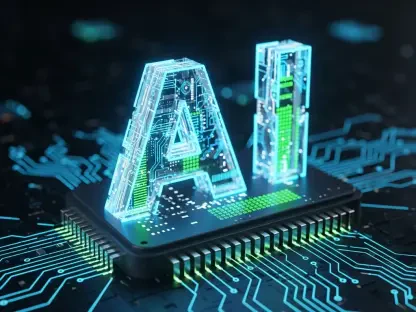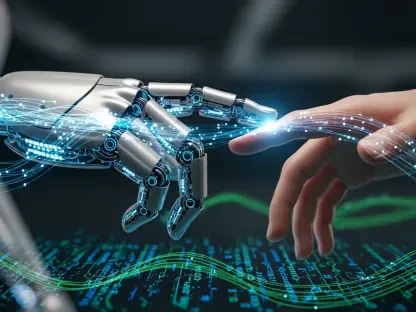I’m thrilled to sit down with Anand Naidu, our resident Development expert, whose profound knowledge in both frontend and backend development, coupled with his mastery of various coding languages, offers invaluable insights into the evolving landscape of IT operations. Today, we’re diving into the transformative world of AIOps and its integration with DevOps, particularly in the fast-paced realm of cloud computing. Our conversation explores how AIOps leverages artificial intelligence to revolutionize monitoring, tackles the shortcomings of traditional tools in dynamic environments, enhances business operations through reduced downtime and cost savings, supports complex cloud-native setups, and integrates seamlessly into DevOps workflows. Join us as we uncover the future potential of this cutting-edge technology.
How would you define AIOps, and what sets it apart from the monitoring methods we’ve relied on in the past?
AIOps stands for Artificial Intelligence for IT Operations, and it’s all about using AI to enhance and automate the way we manage IT systems. Unlike traditional monitoring, which often depended on static metrics and manual intervention, AIOps harnesses machine learning and big data analytics to proactively detect issues, predict potential problems, and even resolve them in real time. It’s a game-changer because it moves us from simply reacting to incidents to anticipating them, which is critical in today’s complex, fast-moving environments.
What are some of the biggest challenges traditional monitoring tools face in modern cloud-based setups?
Traditional tools were built for static, predictable infrastructure, but the cloud era has flipped that on its head. With ephemeral architectures like containers and serverless functions, components are constantly spinning up and down, making it nearly impossible for older tools to keep track. Add to that the sheer volume of data—logs, metrics, and traces—from distributed systems, and you’ve got a situation where manual processes just can’t keep pace. These tools lack the ability to dynamically adapt or leverage AI for deeper insights, which leaves DevOps teams struggling to maintain visibility and control.
Can you elaborate on how the massive data generated by today’s applications complicates monitoring efforts?
Absolutely. Modern applications, especially those built on microservices, generate an overwhelming amount of telemetry data at an incredible speed. We’re talking about logs, metrics, and traces coming from multiple sources across distributed environments. Traditional monitoring often involves sifting through this data manually or with rigid thresholds, which is like trying to find a needle in a haystack. Without intelligent filtering or correlation, teams are buried under noise, missing critical signals that could prevent outages or performance issues.
In what ways does AIOps help businesses minimize downtime and keep operations running smoothly?
AIOps is a lifesaver when it comes to reducing downtime. By using predictive analytics, it can spot patterns that indicate a potential failure before it happens, allowing teams to act preemptively. For instance, it might detect unusual spikes in resource usage and suggest adjustments or trigger automated remediation. This proactive approach means less time spent firefighting and more time focused on innovation, which is a huge win for any business relying on continuous availability.
How does AIOps contribute to cost savings in IT operations?
Cost savings come from several angles with AIOps. First, by reducing downtime, it prevents revenue loss and customer dissatisfaction. Second, it optimizes resource allocation—think dynamic scaling in the cloud where you’re only using what you need, when you need it. Lastly, automation cuts down on manual labor for repetitive tasks like log analysis or incident triage. Over time, these efficiencies add up, freeing up budget for strategic initiatives rather than constant maintenance.
Why is AIOps particularly valuable for managing dynamic, cloud-native architectures?
Cloud-native setups are inherently dynamic, with components scaling up or down based on demand, often across multiple cloud providers. AIOps shines here because it can handle that complexity with ease. It provides end-to-end visibility, correlates data from disparate sources, and adapts to changes in real time. For example, it can track performance across a microservices architecture and pinpoint where a bottleneck might be forming, even as the environment shifts. That level of insight is something static tools just can’t match.
How does AIOps improve incident management when integrated into the DevOps pipeline?
When AIOps is woven into the DevOps pipeline, it transforms incident management by making it faster and smarter. It can integrate with platforms like ServiceNow to automatically create and prioritize tickets based on the severity of an issue. More importantly, it uses historical data and machine learning to identify root causes quickly, cutting down the time spent on diagnosis. This means teams can resolve issues before they escalate, maintaining a smoother workflow and better user experiences.
In what ways does AIOps enhance security and compliance within DevOps workflows?
Security and compliance are huge concerns in DevOps, and AIOps steps in by proactively identifying threats and vulnerabilities. It can analyze patterns in data to detect unusual behavior that might indicate a breach, like unauthorized access attempts. On the compliance side, it helps ensure policies are followed by flagging deviations in real time, whether it’s in code changes or deployment practices. This proactive stance not only protects the system but also builds trust with stakeholders by demonstrating adherence to standards.
What role does AIOps play in optimizing CI/CD pipelines for DevOps teams?
In CI/CD pipelines, AIOps acts like an intelligent overseer. It can detect anomalies during builds or deployments, such as a failing test or a performance dip, and suggest rollbacks or fixes before they impact production. It also analyzes historical data to recommend the best times for releases or to optimize resource usage during deployment. This kind of insight helps teams deliver faster and with more confidence, knowing potential issues are caught early.
What is your forecast for the future of AIOps in shaping DevOps practices?
I’m incredibly optimistic about where AIOps is headed. I foresee it becoming the backbone of fully autonomous IT operations, with generative AI enabling conversational interfaces where DevOps engineers can interact with systems in natural language to resolve issues or get insights. We’ll see a shift from reactive to proactive capacity planning, especially in multi-cloud setups, and tighter integration with workflows like GitOps for automated deployments. Ultimately, AIOps will drive self-optimizing systems that predict and prevent problems, aligning perfectly with the core goals of DevOps to build resilient, efficient environments.








